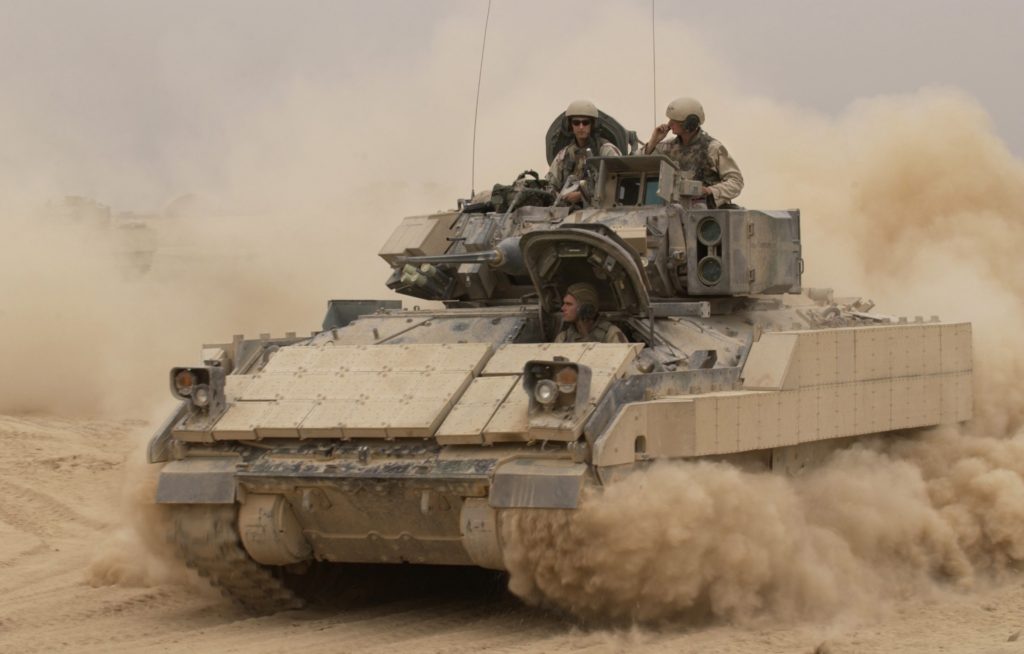BAE Systems was awarded a $347.9 million contract to produce and procure component repair packages for up to 164 Bradley Fighting Vehicles, the U.S. Department of Defense said in a release.
“BAE Systems Land & Armaments L.P., York, Pennsylvania, was awarded a $347,999,966 fixed-price-incentive-fee contract for production of up to 164 Bradley M2A4 and M7A4 vehicles, and procurement of authorized stockage list spares, and additional packages for legacy component repair using M2A3, M7A3 and Operation Desert Storm-Situational Awareness vehicles as a baseline,” the Thursday, June 15 release said.
Work will be performed in York, Pennsylvania and is expected to be completed on June 14, 2019.
Bradley Fighting Vehicles
Introduced in the 1980s, Bradley infantry fighting vehicles are designed for reconnaissance and troop transport.
Bradley M2 variants carry up to seven passengers and can be equipped with 25mm Bushmaster cannons, networked targeting sensors and TOW anti-armor and Stinger anti-aircraft missiles.
The U.S. Army has been upgrading its outdated Bradleys to the Operation Desert Storm-Situational Awareness model since the early 2010s. The OSD SA vehicle features upgraded digital electronics, communications and network connectivity within the army’s armored brigade combat team not available on the older models.
In 2012, the army began upgrading the Bradley’s underbelly armor to improve mine and improvised explosive device resistance. Vehicles with the M2A4 designation have undergone the first phase of “Engineering Change Proposals” that includes track upgrades, improved shock absorbers and suspension, and a higher ground clearance.
Later work will include mobility improvements and better electrical power generation for on-board computing and sensor power.
The army is working on an A5 variant with vastly improved targeting sights and on-board power. The redesigned vehicle will support next-generation weapons systems and resolve the Bradley’s long-standing issues with weight and mobility.
The M7 Bradley Fire Support Vehicle, or M7 FIST, is a variant of the M2A2-ODS and replaces the M981 Fire Support Vehicle. The replacement swapped the TOW anti-tank missile suite for integrated target location equipment and has a hybrid GPS/internal navigation system.
Note: The original release said 473 Bradley M2A4 and M7A4 vehicles. The Department of Defense corrected the quantity to 164 on June 15, 2018.



